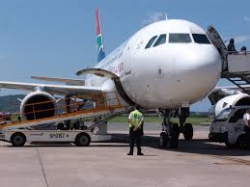Growing air services and connectivity2015-03-03 The proposed KwaZulu- Natal Aviation Strategy, prepared by the KZN Treasury Crack Team, is a response to an appreciation of the benefits of KwaZulu-Natal's regional airports, as well as recognition of the need to develop the aviation industry in the province. There is a growing recognition that regional airports are potentially valuable tools in development, contributing towards sustainable and equitable local economic development, as well as to improved transport systems. By growing air services and increasing air connectivity, regional airports can contribute to the more efficient functioning of the private and public sectors by:
� Providing fast and safe access to regional business, tourist and administrative centers � Providing strategic infrastructure for integrated disaster management, emergency medical, security and fire services � Supporting and expanding tourism ventures by attracting more tourists, both locally and internationally �Supporting agricultural, commercial and industrial development � Creating employment opportunities There are nine regional, or secondary, airports in KwaZulu- Natal owned and operated, under various arrangements, by municipalities. All of the airports offer a general aviation facility but infrastructure and services vary greatly. Pietermaritzburg and Richards Bay provide regular scheduled services to ORTIA, while Margate and Ulundi offer a less regular service, also to ORTIA. Newcastle is in the process of establishing a similar operation. In addition, there are approximately 20 landing strips of strategic importance scattered around the Province. For example, airfields at Himeville, Kokstad, Manguzi and Hluhluwe all play a critical role in the delivery of emergency services. The need for a regional aviation strategy arose because many of these municipal airports and landing strips became isolated and neglected, losing connection to national and international air routes. The airport authorities acted independently, without cooperation on development of infrastructure, air routes, feeder routes, services or promotion and advertising. There is no common policy, or consensus, on how to promote tourism or associated commercial developments. A long term strategy requires safe access to basic air services, runway extensions and new, or upgraded, airstrips. General aviation hangars, fuel facilities and navigational aids are urgently needed. Business opportunities Airports create business opportunities that can be exploited to promote local economic development and generate nonaeronautical airport revenue. This includes retail space, parking, rental cars and advertising. Municipalities own land at or around local airports. This land is a valuable asset that can be utilized for industrial, agricultural, business and even residential purposes. Land zoned appropriately, and made available to the private sector for development will generate substantial funding for the provision of airport revitalization and infrastructure. Development of airport land provides an outstanding opportunity to attract potential projects such as innovation and technology hubs, aviation clusters, transport related industries, agricultural processing, aviation education and training centres, manufacture of sports goods, hotels and conference facilities. In order for the vision of the KZN Aviation Strategy to be realised it is necessary to obtain the required "buy in" from all the municipalities, government departments and other aviation stakeholders. Without such cooperation the goal of growing air services and connectivity in the province will not be achieved. KwaZulu-Natal Aviation Strategy, prepared by the KZN Treasury Crack Team www.http://connectingafrica.co/Aviation/ |
Growing air services and connectivity
Copyright © 2025 KwaZulu-Natal Top Business
